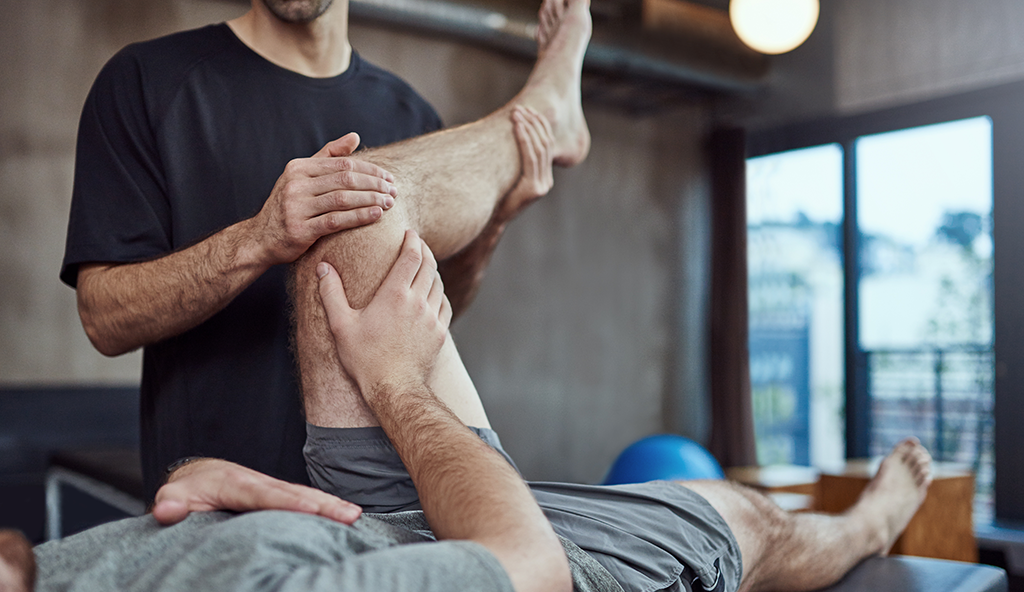
Injury Overview:
Articular cartilage is a smooth but firm tissue that lines the joints of the body and allows for a reduction in friction. This substance covers the ends of the bones that form the hip joint (femur and acetabulum), allowing for smooth motion between the ends of the bones when the hips move. This tissue also acts as a “shock absorber” by protecting the joint during impact activities such as running and jumping.
A chondral defect is a condition of the hip that occurs when there is a defect in the articular cartilage. The defect and/or damage to the articular cartilage can result in a number of conditions leading to various symptoms. Degenerative diseases such as arthritis and osteoarthritis are the most common conditions of the hip in which articular cartilage has suffered damage. In some instances, cartilage can potentially wear down and break off or tear away from the bone. Femoroacetabular impingement (FAI), can also lead to chondral defects within the joint.
Normal wear and tear that comes with aging is a common culprit for chondral damage in the hip. Damage to the articular cartilage within the hip can also occur as a result of a direct blow to the hip joint, such as with a fall or a traumatic accident (i.e. motor vehicle accident). These defects can also result from repetitive motion, overuse, and stress from sports or other activities.
Symptoms
The most common symptom of a chondral defect is pain, which can almost feel like a “catch” within the joint.
Diagnostic Testing
Dr. Anz will review the patient’s background including a complete history and discuss any injury that may have taken place to cause damage to the hip joint. Typically an MRI is the most effective method to view the articular cartilage within the hip joint.
Treatment
Non-Surgical
In less severe cases, surgery for chondral defects can be avoided and patients are able to manage their pain with non-steroidal, anti-inflammatory medications, ice, and exercises as prescribed by a physical therapist. Injections into the hip can also help alleviate symptoms.
Surgical
Cartilage has a poor blood supply and does not have the ability to repair itself. In cases of severe chondral injury, surgery will likely be recommended with the goal of minimizing symptoms. Some procedures also have the capacity to help restore the area with scar tissue that behaves like cartilage. These surgical procedures can minimize the symptoms associated with cartilage defects and allow for a better quality of life. The exact surgical technique can vary based on the size and severity of the defect. Dr. Anz typically uses a variety of techniques:
- Chondroplasty is an arthroscopic surgery which removes and cleans out, or debrides, any unstable pieces of cartilage or foreign bodies within the joint. When a patient is diagnosed with “loose bodies”, a chondroplasty and loose body removal is typically the procedure that is used.This usually is the first approach to treat damaged cartilage. It offers a shorter recovery time and is less invasive.
- Microfracture is another approach that has been developed to help cartilage grow. During the procedure, tiny holes are made in the underlying bone stimulating stem cells within the marrow to approach the site of injury, creating new cartilage growth.
Post-Op
A rehabilitation and physical therapy program will be prescribed at your first post-operative visit with Dr. Anz. Initially, the therapy will focus on slowly returning motion back to the injured hip. After that is achieved, you will follow a progressive strengthening program to protect the repaired hip and avoid future damage or degenerative issues.
—
For additional resources on chondral defects and chondral injuries, please contact the Gulf Breeze, Florida orthopedic surgeon, Dr. Adam Anz located at the Andrews Institute.




